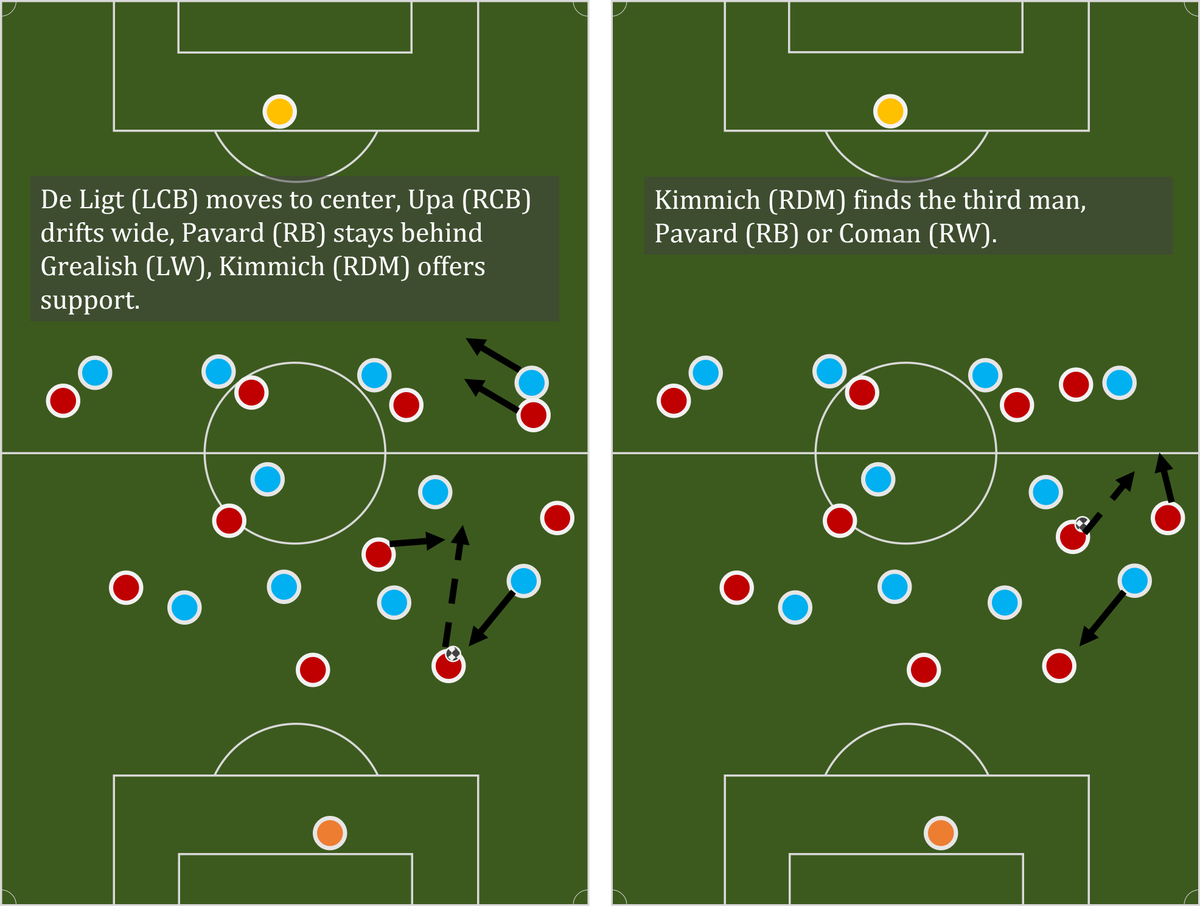I believe Madrid’s defensive strategy against Man City had many flaws that City couldn’t exploit. Let’s look at it closely. Defending 5 against 4 at the tip, Kroos on KdB, Valverde on Gundo, FBs on wingers, and two CBs very close on Haaland. 

This structure could've resulted in huge pockets between Madrid FBs and CBs, but after first 20 mins, City was usually too focused on control and potential Madrid counter attacks and couldn’t do something they normally do really good; creating 2v1s at wide areas through switch… twitter.com/i/web/status/1… 

To create these 2v1s they usually needed that extra player; either one of the pivots running into half space or FB overlapping or underlapping. Here are some rare cases when they used it and Madrid’s defensive structure obviously struggled. 







City will probably use these advantageous situations more effectively in the 2nd game if Madrid continue with the same defensive structure. A good way for Madrid to avoid this is to use Tchouameni instead of Rodrygo. By having one more player to cover these pockets and asking… twitter.com/i/web/status/1…
Screenshots were edited with Once Video Analyser PRO - @11OnceSport #OncePRO
• • •
Missing some Tweet in this thread? You can try to
force a refresh

 Read on Twitter
Read on Twitter
















